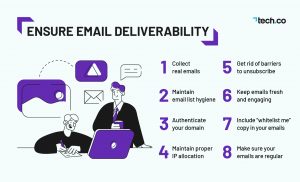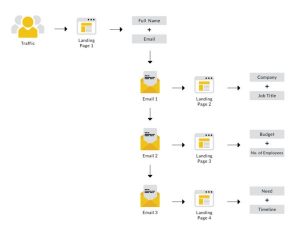
Did you know that today’s ever-expanding popularity of apps, games and the Internet of Things is changing consumers’ opinions of your website? In fact, these digital experiences are becoming so sophisticated that consumers are expecting great customer experiences everywhere they go online—including your site.
Defining a great customer experience refers to the complete experience a customer has with your business—starting with your website, which Forrester calls “a fantastic acquisition tool.” If your website does not deliver on visitors’ experience expectations, they may not return. Instead of lagging on the customer experience front, you can take the lead and redesign your site with a customer experience focus.
High-quality digital experiences have become so important that Gartner made this statement in a recent customer experience report: “By 2020, poor customer experiences will destroy 30 percent of digital business projects.”
The implications of this reality are far-reaching. That’s why customer experience is the “new competitive battlefield,” says Garner. Its report included these observations:
- By 2016, 89 percent of marketing leaders expect to compete primarily on the basis of customer experience, up from 36 percent four years ago.
- By 2018, more than 50 percent of organizations will implement significant business model changes in their efforts to improve customer experience.
Further, other findings emphasize the rise of customer experience as a competitive advantage in today’s marketplace:
- A report by Econsultancy for trends in Digital Marketing asked companies to indicate the single most exciting opportunity for their organizations. The highest response was customer experience.
- PwC’s Digital IQ survey states that 25 percent of businesses expect their digital enterprise investments to result in creating a better customer experience.
- A recent study by Walker Info states that by 2020, customer experience will be the leading brand differentiator when it comes to buying decisions, leaving behind such criteria as product and price.
The bottom line is clear: If you want your customers to stay loyal, you must invest in their online experiences. But what changes can you make to your website to boost customer experience?
Several areas offer room for improvement—including updating your site with a focus on user experience(UX), redesigning your site for experience optimization and ensuring your site is firing on all cylinders in today’s mobile world.
Putting Business Websites to the UX Test
Of all the companies you would expect to pass a user experience test, a UX company would rank right up there. Experience UX thought so, too—until the firm ran its website through the same test it uses with its clients. The company was shocked when its site failed on a critical metric: Brand perception.
“Our audience didn’t feel anything for our brand,” stated founder Damian Rees. “They felt we were experienced and competent, but a bit boring and uninspiring. Worst of all, they felt we lacked passion. We learned that it’s easy to be so close to your site that you just can’t see things from a user perspective. As UX specialists, we knew this, but we were still surprised at the extent of the differences between our and our users’ perception.”
After the test, Experience UX made key marketing and website changes, including:
- Updated Buyer Personas. The firm’s study uncovered a critical insight that “changed our business entirely. We found that our vision of our ideal customer was wrong. For eight years, we’d been trying to educate our users about UX and why they should care about it. But our research proved that our customers already know what UX is. Instead, they want to know why they should do it with us.”
- Leveraged Competitive Differentiator. With its newfound focus, the company renamed its service from “usability testing” (finding problems) to “UX research” (understanding the entire user journey). “It’s the one thing our clients have trouble doing well in-house and that has always been our strength.”
- Updated All Content. “We developed our new website and blog to let our passion shine through in all of the content.”
Optimize Your Site Redesign Process
When we first set out to design a new, personalized experience—like a new app or website—we naturally first think about what images, headlines or layouts will resonate with consumers and influence them to take action. While aesthetics are essential to creating the right experience, “it’s just as important to think of design in terms of how customers interact with our brands, through looking, typing, clicking, touching, speaking or swiping,” Adobe stated in its Experience Design Optimization report.
The right experience design will be emotionally inspiring, but also easy and enjoyable for each customer to use, said Adobe. It recommended site redesigns use an iterative process, including prototyping and testing. The company offered four experience design optimization tips.
- Develop a Customer Journey Map. Bring all customer data from across your organization together to learn how your customers interact and respond at different touchpoints. Identify high-volume spots, roadblocks and key customer segments. Use that insight to map out the journey and find points to improve.
- Prototype an Experience. Design a customer experience informed by your new customer journey map. Prioritize your goals to interact with customers at the touchpoints that will make the greatest emotional impact. Consider organizing the launch to first address areas where high-value customers are experiencing issues.
- Revise Your Prototype. Use new incoming data to learn how customers respond to the design. Find areas that need adjustment and make the appropriate changes.
- Perform Ongoing Optimization. Continue to monitor how customers are responding to your experience design through direct feedback, social comments and reviews. Also, measure the impact of all experiences and make any necessary changes.
Build a Mobile Bridge Over the Customer Experience Gap
According to the Pew Research Center, in all of human history, no technology has been adopted more quickly by more people than the mobile phone. Pew also found that consumers today are spending 78 percent of their mobile time in apps, and only 22 percent of mobile time on web browsing.
This gap is about to change, though, according to Forrester. The research company expects these emerging trends to bridge the divide between mobile web and mobile apps—starting now:
- First, Apple (with web markup) and Google (with app indexing) recognize that more people are using browsers to discover apps, and have therefore turned the web into a dominant component in their app store algorithms.
- Second, fast-loading pages such as Facebook’s Instant Articles or Google’s Accelerated Mobile Pages aim to turn the slow experience of rendering web pages on mobile into a seamless, rapid process.
- Third, push notifications are slowly moving to the mobile web with Google’s recent support of push notification for web browsers.
- Lastly, Google announced in July 2015 the launch of Eddystone, an open software platform that allows beacons to send out encoded links to smartphone browsers in addition to apps.
While apps offer the best-of-breed user experience, they are not best-of-breed acquisition tools. That’s where mobile web experiences excel. Forrester advises companies to use the mobile web for acquisition and apps for engagement—and to take advantage of this switch now to gain a competitive advantage, because most brands are under-investing in mobile. “Too many marketers have a narrow view of mobile as a sub-digital media and channel. This is good news for the 20 percent of marketers who told us they have the budget they need to move forward on creating an exciting mobile web experience.”
UX, design and mobile are just three of the many strategies you can incorporate on the way to a website update. Key redesign strategies will help you create digital experiences that attract more visitors and encourage them to interact. Engaging in these and other proactive website redesign initiatives will help you relaunch a website that speaks to your customers, entices them through better design and inspires them to interact with your site when they are on the move.
In this way, you’ll create a website poised to not only help your company excel today, but also long into the future.
Digital & Social Articles on Business 2 Community(53)
Report Post




